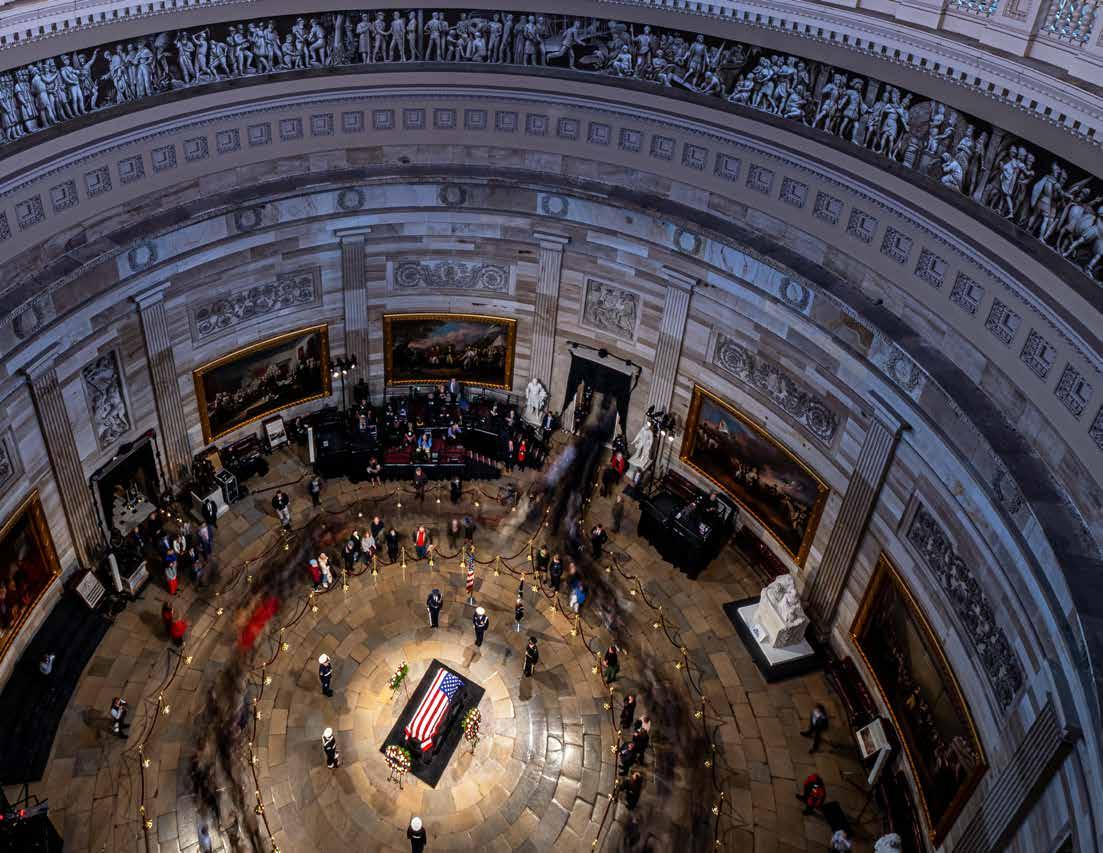Credits
EDITOR William Ramsey
PROJECT COORDINATOR Gene Myers
COPY EDITOR, FACT CHECKER Laura Nichols
SPECIAL THANKS
Chris Thomas, Chris Fenison, Angie Grissom, Vanessa Cotton Paige Windsor, who does many amazing things to pull together our USA TODAY NETWORK family across America.
And all the journalists covering local, state and national politics every day, keeping officials accountable.
On the cover
FRONT COVER: STEVE ALDRIDGE / USA TODAY NETWORK
RIGHT: A bouquet of flowers rests at the base of the Smiling Peanut in February 2023 in Plains, Georgia. The 13-foot-tall roadside attraction is a remnant of Jimmy Carter’s 1976 presidential campaign. RICHARD BURKHART / SAVANNAH MORNING NEWS
Copyright © 2025 by USA TODAY
All Rights Reserved • ISBN: 978-1-63846-150-0
No part of this book may be reproduced, stored in a retrieval system or transmitted in any form or by any means, electronic, mechanical, photocopying, recording or otherwise, without prior written permission of the copyright owner or the publisher.
Published by Pediment Publishing, a division of The Pediment Group, Inc. • www.pediment.com • Printed in Canada.
This book is an unofficial account of the life, career and legacy of President Jimmy Carter by USA TODAY and is not endorsed by the Carter family.
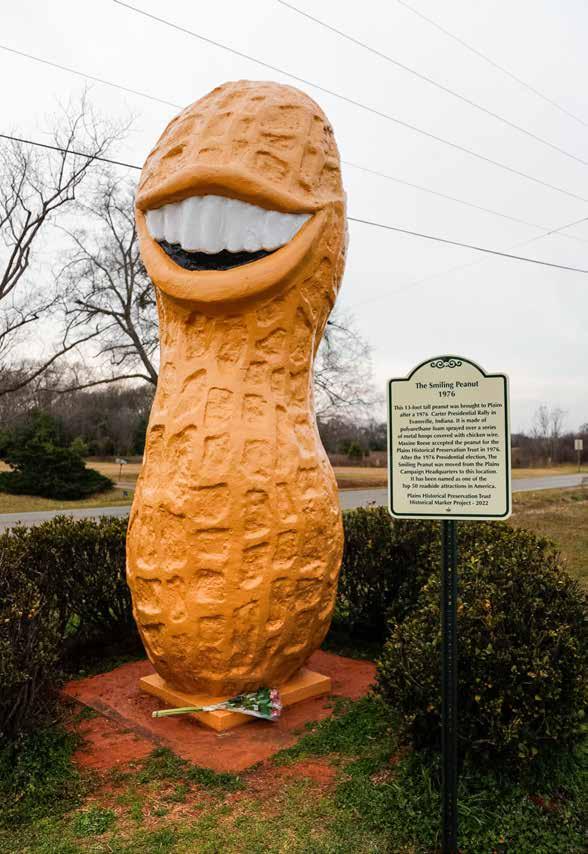
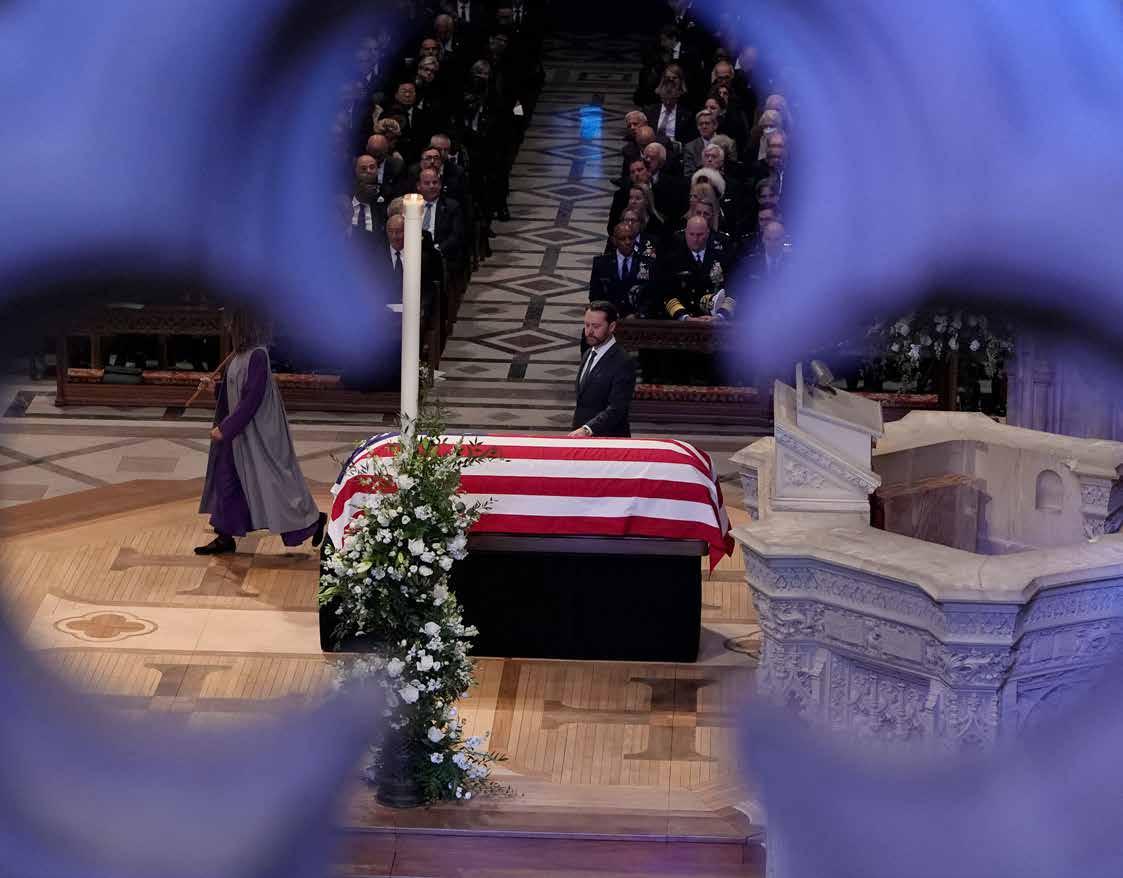
Full Life Lived
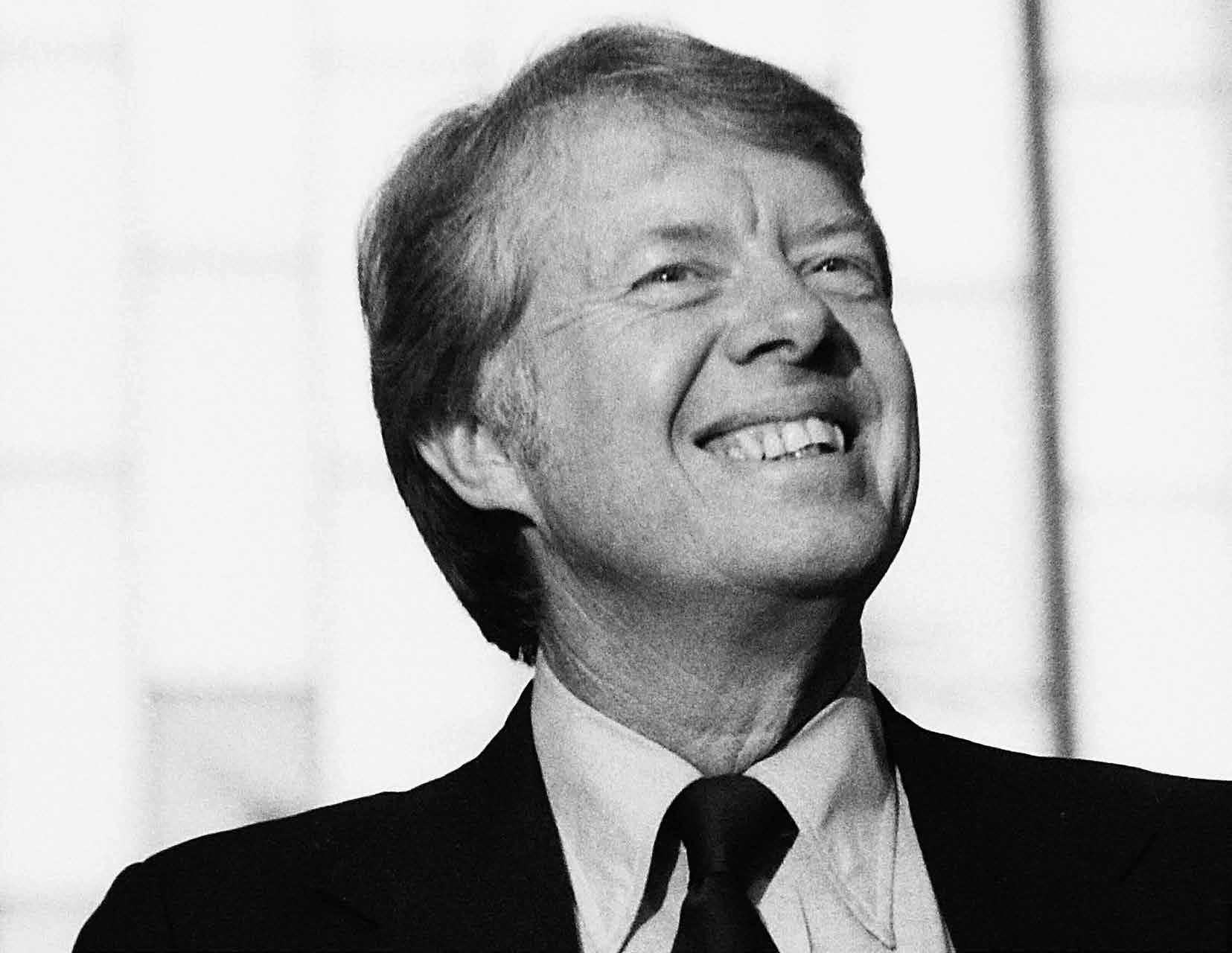

‘As an American figure, he’s a giant.’
SUSAN PAGE | USA TODAY
President Jimmy Carter, honored more widely for his humanitarian work around the globe after his presidency than for his White House tenure during a tumultuous time, lived for 100 years.
“My father was a hero, not only to me but to everyone who believes in peace, human rights and unselfish love,” said James Earl “Chip” Carter III, the president’s second son. “My brothers, sister, and I shared him with the rest of the world through these common beliefs. The world is our family because of the way he brought people together, and we thank you for honoring his memory by continuing to live these shared beliefs.”
Carter died Dec. 29, 2024, in his hometown of Plains, Georgia — a little more than a year after his wife of 77 years, Rosalynn, also passed away in the modest house they built together when he took over his father’s peanut warehouse business and was only beginning to consider a political career.
After serving a single term in the White House, Jimmy Carter became one of the
most durable figures in modern American politics. Leaving the White House at age 56, he would hold the status of former president longer than anyone in U.S. history.
Carter remained remarkably active in charitable causes through a series of health challenges during his final years, including a bout with brain cancer in 2015.
In the White House from 1977 to 1981, Carter negotiated the landmark Camp David peace accords between Israel and Egypt, transferred the Panama Canal to Panamanian ownership, dramatically expanded public lands in Alaska and established formal diplomatic relations with the People’s Republic of China.
But the 39th president governed at a time of soaring inflation and gasoline shortages, and his failure to secure the release of Americans held hostage by Iran helped cost him the second term he sought.
“He’s never going to be ranked as a great president; he’s middling as a president,” said historian Douglas Brinkley, author of a 1998 book on Carter, “The Unfinished
Presidency.” “But as an American figure, he’s a giant.”
After losing his reelection bid to Ronald Reagan, Carter continued working as an observer of elections in developing countries, building houses through the nonprofit Habitat for Humanity and teaching Sunday school at the tiny Maranatha Baptist Church in Plains.
He was awarded the Nobel Peace Prize in 2002.
“I can’t deny that I was a better ex-president than I was a president,” he said with a wry laugh at a breakfast with reporters in Washington in 2005.
“My former boss was humiliated when he lost in 1980; he felt he let himself and the American people down,” David Rubenstein, a young White House staffer for Carter who became founder of the Carlyle Group and a billionaire philanthropist, told USA TODAY.
“For a long time, he was basically the symbol of a weak president and a terrible person. And today, 40-some years later, he’s seen as a very incredible person who has had many good things he did, though
Before politics: Marriage, the Navy, the farm
Jimmy Carter, the intelligent and determined boy from Plains, went to college for a few years, then set his sights on the Navy. He graduated from the U.S. Naval Academy in 1946.
That summer, he and his hometown sweetheart, Rosalynn, got married.
At the start, they weren’t even supposed to go on their first date.
On a Sunday night in 1945, Jimmy, on a break from the U.S. Naval Academy and in his hometown of Plains, Georgia, was supposed to go out with another woman. But after she was busy at a family reunion, Carter sought out another date — and laid eyes on his future wife.
“I wanted to have a date because I was getting ready to go back to Annapolis for another time of isolation,” Carter told Oprah Winfrey in an interview in 2015. “I was cruising around Plains and saw Rosalynn on the front steps of the Methodist church.”
They would be lifelong partners. The pair had a shorthand from when they were dating, an acronym between the lovers that would continue to be used by them over the years: ILYTG.
“‘I love you the goodest,’” Carter explained to People magazine. “That’s what my mother and daddy used to say back and forth, and I picked it up with Rosa.”
In the years after World War II, he served in the Navy’s submarine service in the Atlantic and Pacific fleets. And after doing graduate work in nuclear physics, he became a pioneer in the introduction of nuclear power in submarines.
When his father died in 1953, Carter resigned his naval commission and took over operation of the family peanut farms with Rosalynn. After a rough early patch, the business flourished, and Carter became increasingly active in community affairs and politics.
During two terms in the Georgia state Senate, he gained a reputation as an independent voice who attacked wasteful government practices and helped repeal laws designed to discourage Black Americans from voting.
But in 1966, he lost a race for governor to segregationist Lester Maddox in an election that analysts said reflected a Southern backlash against national civil rights legislation enacted in 1964 and 1965. In a second bid for governor in 1970, Carter minimized his appearances before Black audiences and won endorsements from some segregationists.
After he was elected, though, Carter declared that the era of segregation in Georgia was over, and he was hailed as a symbol of a new, more inclusive South.
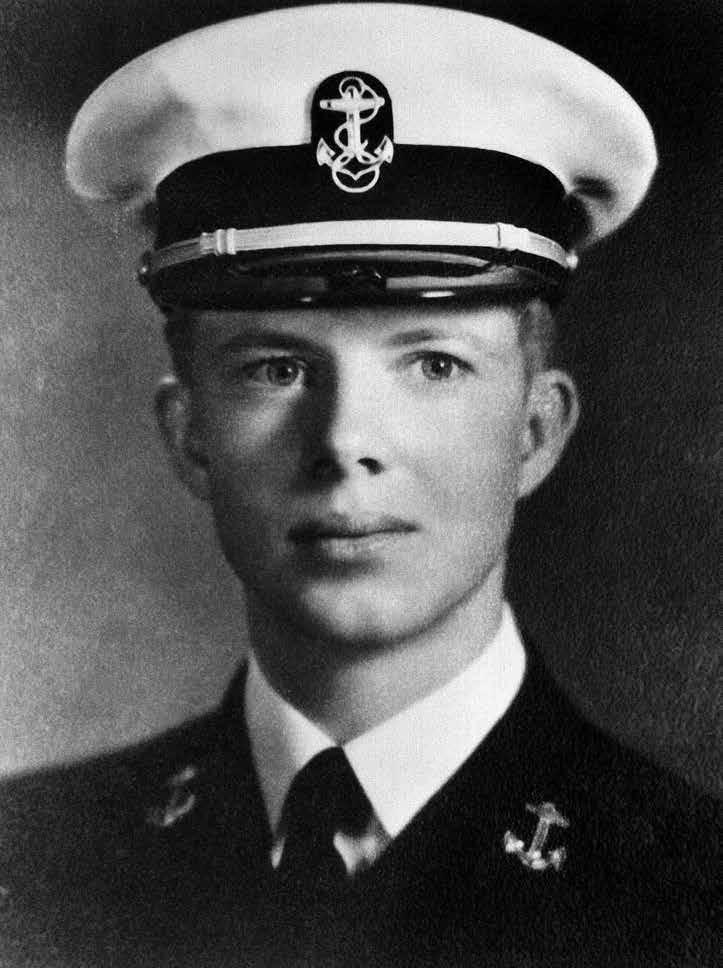
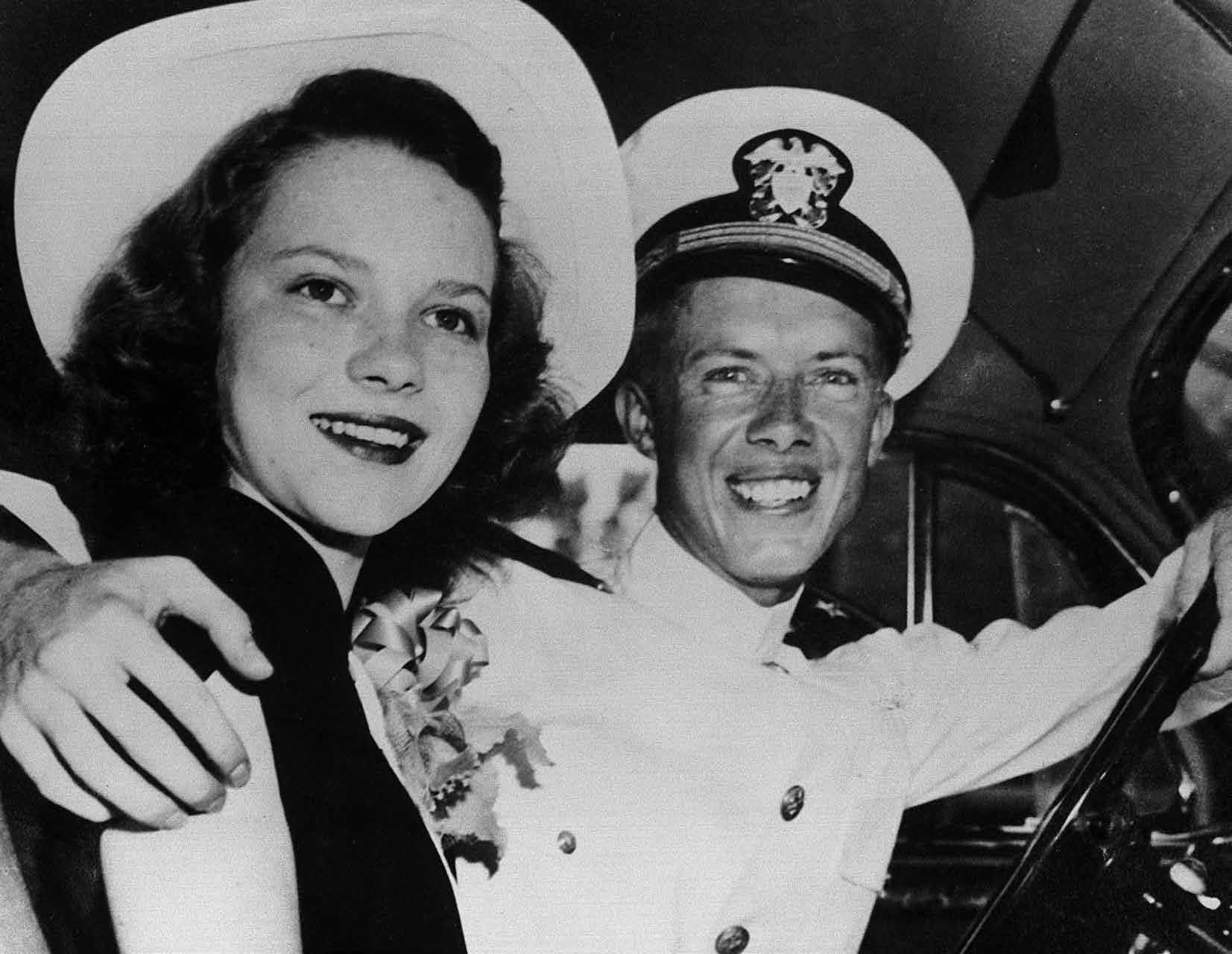
was taken on July 7, 1946, the day when
“[A]pproximately 10,000 people a day came to Plains to find out about candidate Carter.”
NATIONAL PARK SERVICE
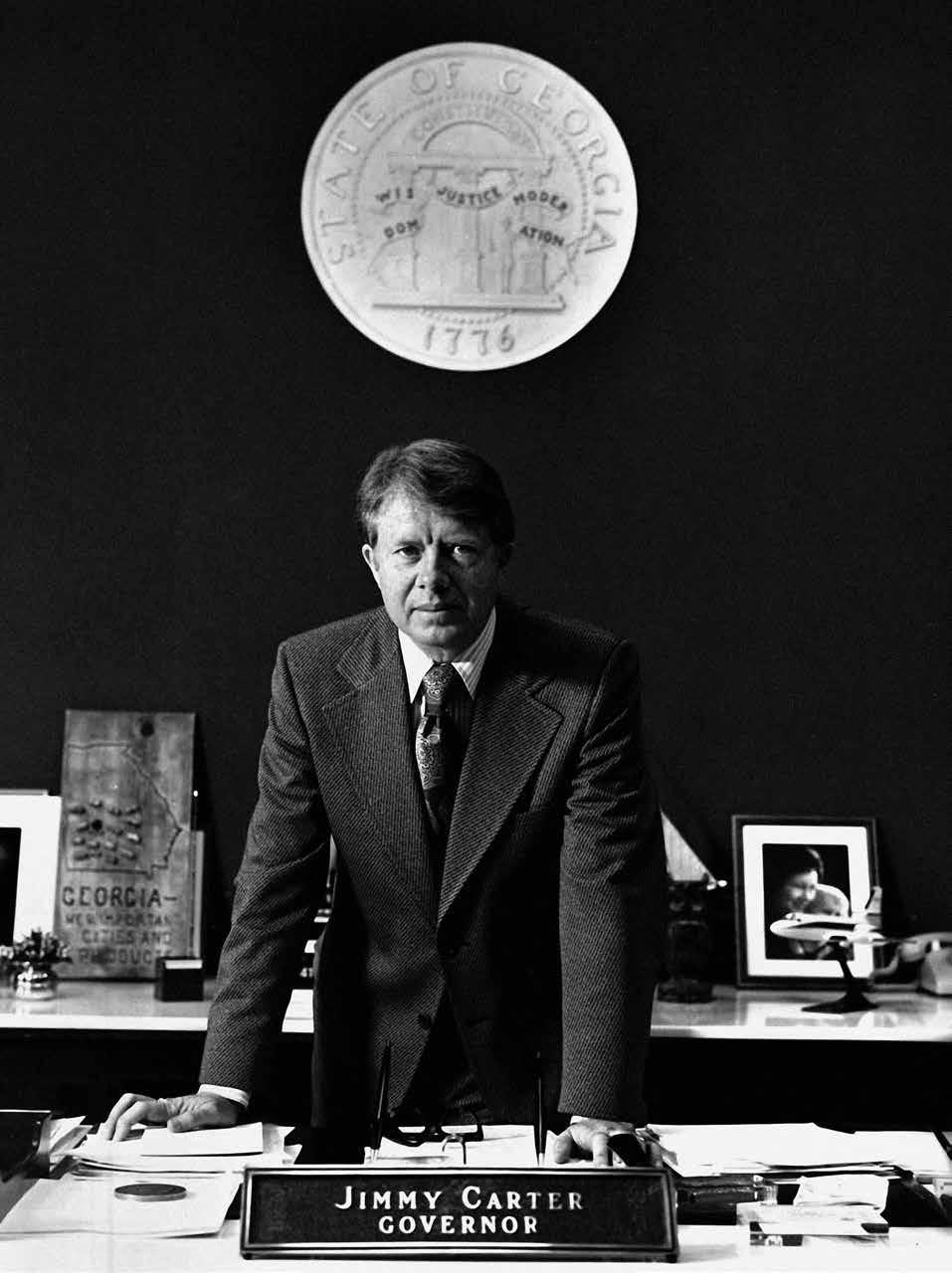
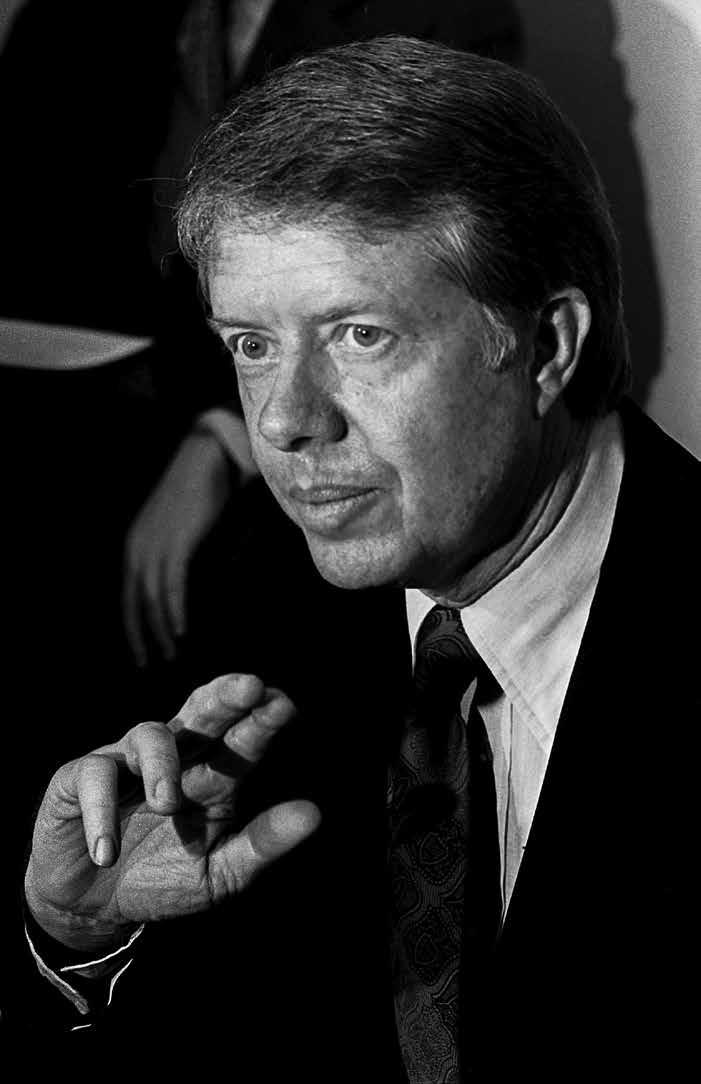
Carter campaign gets rolling S
ince 1888, a small train depot has stood in Plains, Georgia. The most exciting series of events that happened there was unlikely, to say the least.
Jimmy Carter used the location as his campaign headquarters. The depot had helped the town grow but was closed by the early 1950s. “Originally, the Plains Depot played a vital role in the community, serving as both a freight and passenger depot until 1951 when passenger service was discontinued,” the National Park Service says.
It was brought back to life for Carter.
“It was reopened on April 18, 1976,
to serve as the Presidential Campaign Headquarters for Jimmy Carter,” the NPS says. “During that time approximately 10,000 people a day came to Plains to find out about candidate Carter. Many state primary victories, as well as the Presidential victory, were held in the streets around the depot. The depot now contains a self-guided museum with exhibits focusing on the 1976 Presidential campaign.”
The unassuming depot became Carter’s headquarters mainly due to the fact that it was the only building available in the small town that had a bathroom.
Georgia Gov. Jimmy Carter, chairman of the Democratic National Campaign committee, speaks at a press conference before a Democratic rally at the National Guard Armory in Nashville on April 30, 1974. Carter believed that the Republican surge, which swept the South in the past decade, was over and predicted heavy GOP losses in 1974. JACK CORN / THE TENNESSEAN
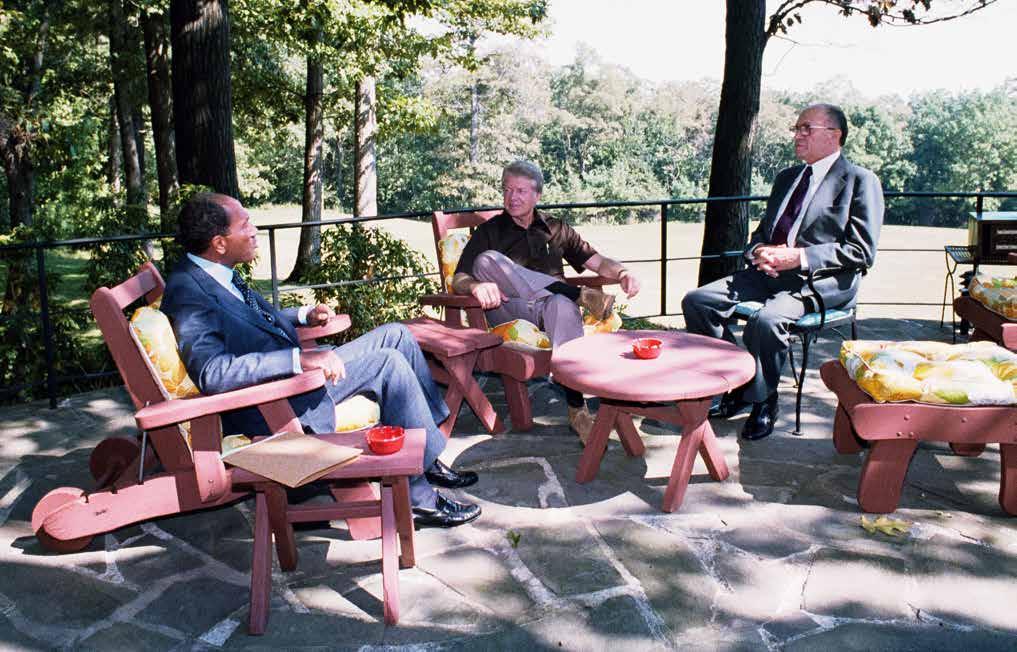
ABOVE: Anwar Sadat, Jimmy Carter and Menachem Begin hold one of their Camp David meetings on the Aspen Cabin patio on Sept. 7, 1978. JIMMY CARTER LIBRARY
OPPOSITE: In September 1978, President Jimmy Carter negotiated the Camp David Accords, which created a framework for a peace agreement in the Middle East. Pictured are Egyptian President Anwar Sadat, Carter and Israel Prime Minister Menachem Begin at the March 26, 1979, White House signing of the resulting Israel-Egypt peace treaty that began an era of lasting peace between the two nations. JIMMY CARTER LIBRARY
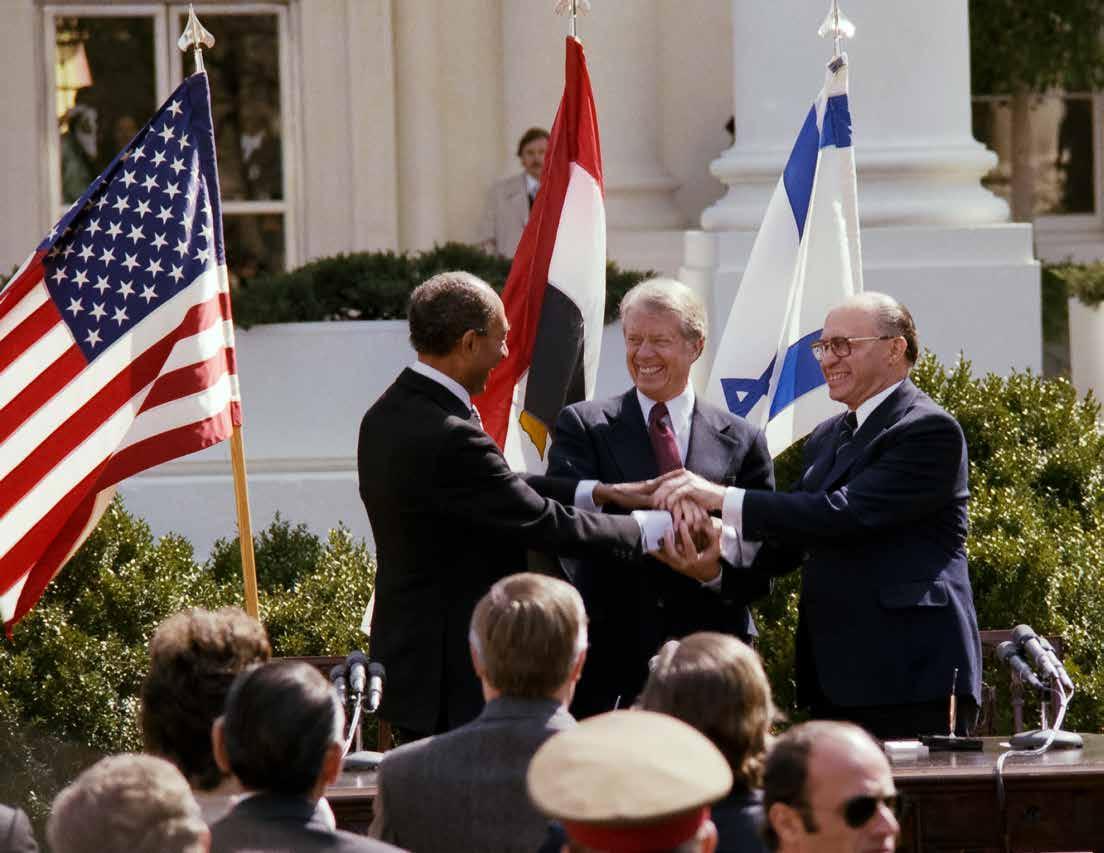
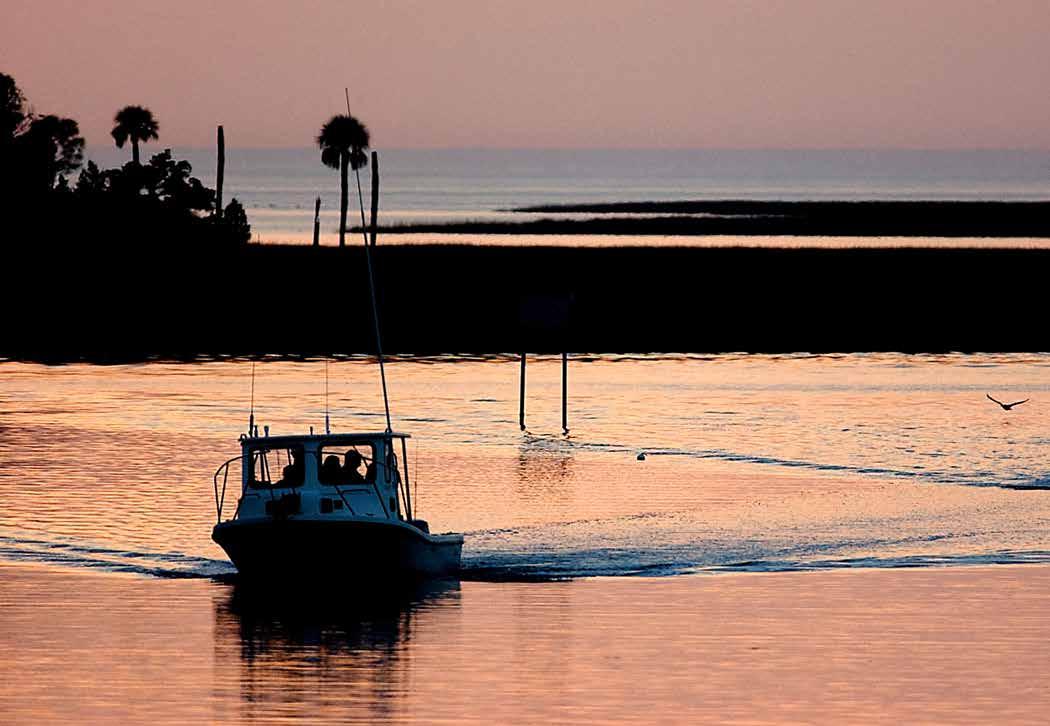
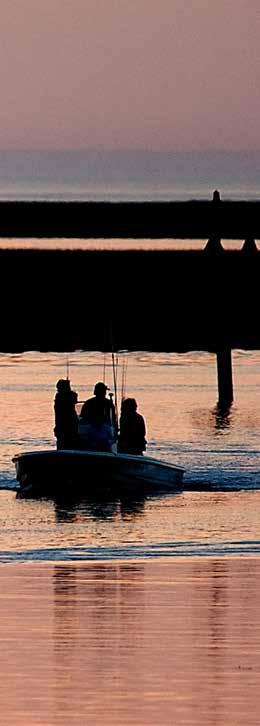
Carter visited our county to worship, visit Antietam and, yes, fish
JULIE GREENE | THE HERALD-MAIL (HAGERSTOWN, MD.)
Ginny Slick said she’ll never forget when President Jimmy Carter visited her family’s western Washington County farm in September 1980 on his way to go fishing. There was a lot of secrecy about the trip, with the Slick family farm along Dam No. 5 Road one of a few the Secret Service was considering for a helicopter landing, according to Slick and an interview her late husband, Jack, did with
The Herald-Mail around the time of the presidential visit.
The stop was so secretive that Ginny Slick said a neighbor, curious about why a helicopter was landing in the area, later confessed to standing on a hill, using a sight on a rifle to see what was going on. Washington County, Maryland, has seen presidents stop by, in part because Hagerstown Regional Airport can be a stop on the way to and from Camp David,
the presidential retreat in neighboring Frederick County.
While president, Carter’s visits also included Antietam National Battlefield, Hagerstown’s First Baptist Church and the Slick family farm.
Jack and Ginny Slick owned Wolfe’s on the Square, a general store that used to stand on the Town Square in downtown Williamsport and sold bait, hardware and liquor and served lunch.
OPPOSITE: President Jimmy Carter aboard Capt. Paul Cronk Jr.’s boat “Willa Mae,” at left, returns after a day of fishing in Steinhatchee, Florida. Behind Carter are Secret Service agents. DOUG FINGER / THE GAINESVILLE SUN
D.C., his job involved the Alaska parks. He’s probably one of the few people who have actually read every word of ANILCA.
So when he ended up in Plains, he asked Carter how he was able to work on this massive piece of legislation during the time of something many remember about his presidency — the Iran hostage crisis.
“He said it was his distraction from all these other world events,” Ingram said.
Ingram doesn’t have a hard time picturing Carter multitasking between a big
“It was like a magic trick. But he could do it. You have a genuinely decent man with a very high IQ who can multitask better than anybody I’ll ever meet in my life.”
GARY INGRAM
world event and small details of a park. He tells the story of a time when Carter wanted to talk about adding a chicken coop to the boyhood farm that’s now part of the Plains park. The former president told him to come to the back porch of his house.
Ingram knocked on the sliding glass door and Carter waved him in. He was sitting at his desk, in shorts and a T-shirt.
They started to talk when Carter got a call. It was during the Arab Spring movement of the early 2010s. And the person on the other end clearly was someone important. So Ingram stood up to excuse himself. Carter motioned for him to stay.
While Ingram sat there, trying not to listen to the conversation, Carter kept scratching away at a piece of paper in front of him. When the conversation ended, Carter hung up the phone, apologized for the interruption, and handed Ingram the piece of paper.
It was a drawing of a chicken coop. Carter had written down details, including the dimensions and the kind of wood. He even had drawn some chickens into the coop, labeled what type they should be.
“And I was like, ‘How is this even possible that you can have that high-level conversation and at the same time scratch out these incredible, beautiful drawings?’” he said. “It was like a magic trick. But he could do it. You have a genuinely decent man with a very high IQ who can multitask better than anybody I’ll ever meet in my life.”
Some of Ingram’s favorite memories are the relatively mundane ones. Like when Rosalynn was picking blueberries in the yard but realized she had forgotten to bring a bowl. He took off his hat, the iconic flat-brimmed ranger hat, and had her fill it.
They went inside, cleaned off the berries, and while the Carters sat and had their cereal with blueberries, he poured another cup of coffee and ate a few with them.
Or there was the time President Carter “scared the daylights” out of him.
Carter had suggested that they go feed the fish in the pond. He gave Ingram a cup of food and told him to just throw some of it into the water. Ingram figured there were a few small fish in the pond.
“There were these huge fish there,” he said. “And when I threw the food out, they were like sharks watching me. The water exploded and I jumped back so far that I fell on my butt. I said, ‘You knew that was going to happen, didn’t you?’ And he was just laughing and laughing.”
If Ingram himself felt a bit like a fish out of water when he arrived in Plains, that quickly changed. Carter told him he should live in Plains. He couldn’t find a home there, but he and his family settled in nearby Americus. He raised children there. He bought a piece of land and a tractor. He talked to the ex-president about two of his passions: faith and farming.
“That was my new life,” he said. “I had completely found a sense of place.”
More than anything, though, he says he has memories of those years and the lessons he took from his time with President Carter. Work hard. Do the right thing. Be kind and honest. It might not always be the easiest path to take, but it’s one that will make a difference in your family, community, country and world.
“President Carter solidified my belief in helping others,” Ingram said. ”He taught me that even though we may not all agree on whatever issue, living a life focused on helping others is the most important trait we can have.”
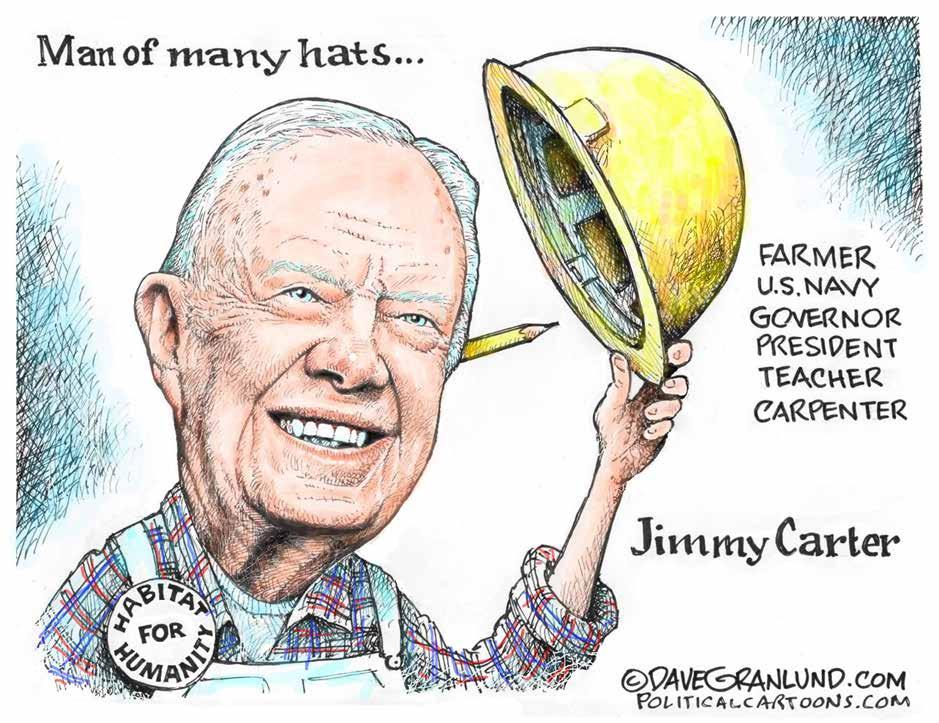
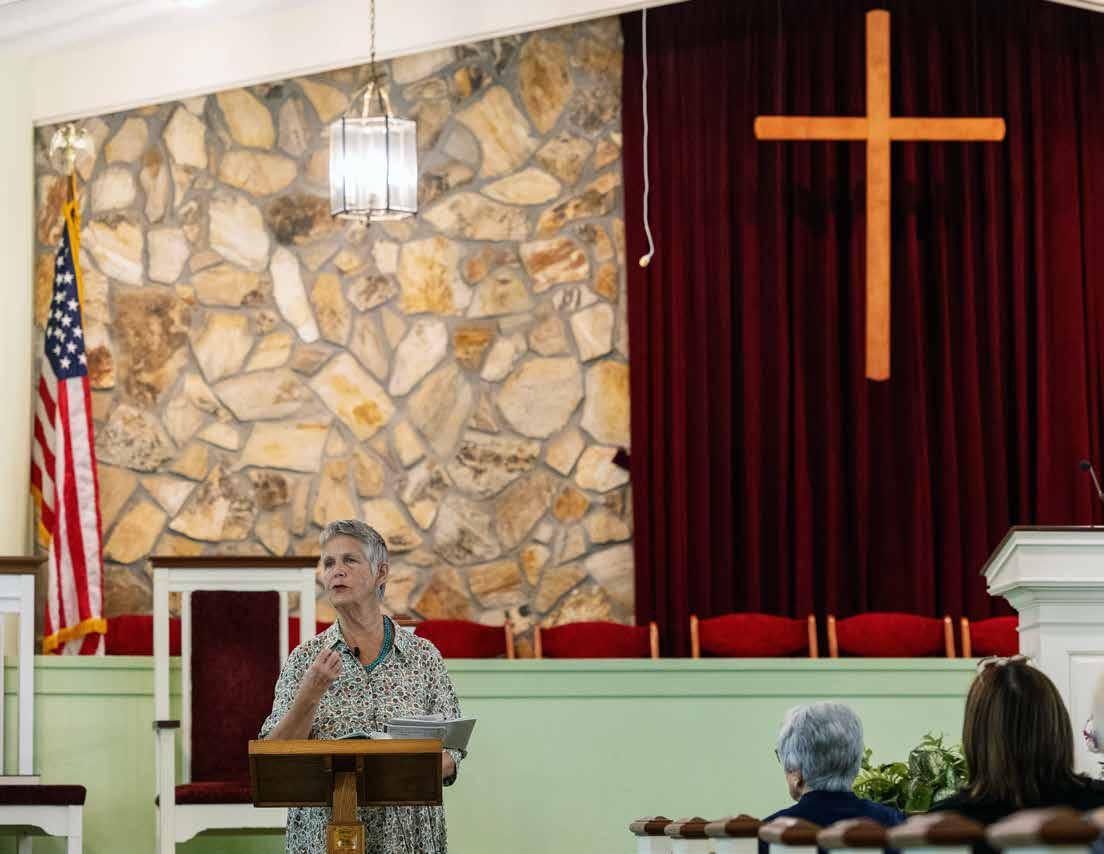

Pilgrimage to hear an inspirational message
JIM ABBOTT | DAYTONA BEACH NEWS-JOURNAL
When it comes to bucket-list aspirations, it seems like a longshot.
Meeting a president. Telling him how much his accomplishments meant to you, how much it meant to cast your long ago first vote in a presidential election for him, even though he didn’t win.
Yet that’s the kind of thing that used to happen on a regular basis at Maranatha Baptist Church in tiny Plains, Georgia, where Jimmy Carter used to teach Sunday school.
I know because it happened to me.
Memories of that Sunday morning experience with a former president in September 2017 resurfaced in the wake of news that Carter had died.
After a one-term presidency often regarded as ineffectual, Carter redefined his legacy with a post-presidency devoted to service of others.
For more than 35 years, Jimmy and Rosalynn, worked alongside nearly 103,000 volunteers in 14 countries to build, renovate and repair 4,390 homes. Habitat credits the Carters with transforming the organization into an internationally recognized force for decent and
“And standing in front of them, asking with a wink if there were any visitors that morning, would be
President Jimmy Carter — preparing to teach Sunday school, just like he had done for most of his adult life.”
affordable housing.
The Carters also founded the Carter Center in partnership with Emory University, building an organization seeks to prevent and resolve conflicts worldwide, enhance freedom and democracy and improve healthcare worldwide through a fundamental commitment to human rights and the alleviation of
PRESIDENT BARACK OBAMA
human suffering.
Accomplishments include observing 125 elections in 40 countries to help establish and strengthen democracies and leading a coalition that has reduced incidence of Guinea worm disease by 99.99%, making it likely to be the first human disease since smallpox to be eradicated, according to the organization’s website.
Maybe the best former president ever
OPINION STAFF | USA TODAY
Jimmy Carter didn’t just lose his bid for reelection in 1980. He was trounced. His 9.7-point loss in the popular vote to Ronald Reagan was the second worst defeat suffered by an incumbent president in the past century, behind Herbert Hoover, who was running during the Great Depression.
For years afterward, Carter was regarded as a bland and ineffectual president. The Democrat was elected in 1976 as the reformist outsider the nation wanted after the Watergate scandals, but he soon found that he lacked sway in Congress and was largely powerless over the stagflation of the time. His effort at a rescue of U.S. hostages in Iran ended in the failure of America’s four military services. His admonitions about the energy crisis of the 1970s had a lecturing tone.
For Carter, recent years had been kinder, with a Nobel Peace Prize and many other accolades as part of his legacy. It is time to recognize him for what he was — a better president than the caricatures of time
gave him credit for, and maybe the best former president ever.
Like George H.W. Bush and even Hoover, Carter can blame bad timing for his reelection loss. He had the misfortune of governing at a time of rampant inflation driven by surging oil prices. Then, just as he was running for a second term, the Federal Reserve decided it was time to crush inflation, with punitively high interest rates that sank the economy.
Like many other presidents who were fighting against the tide, Carter’s accomplishments were not always recognized. It was Carter, for instance, who began much of the deregulation that Reagan would later be credited with.
Overall, Carter’s greatly enhanced reputation is largely the result of what he did after his presidency. Rather than cash in, he tirelessly served the causes of peace, human rights, disease eradication and affordable housing. He worked to ease tensions on the Korean Peninsula, in the Middle East, in South America and elsewhere.
He will perhaps be most remembered for the many times he strapped on a tool belt, even as his health failed, and helped build or restore housing for low-income families.
There is something vaguely George Washington-like in the way Carter nobly returned to everyday life after attaining great power.
Carter went back to his old hometown and his old church. When not working on his many projects for the betterment of humanity, he might be found on a modest fishing boat.
He was perhaps the most unimperial of all U.S. presidents when in power, starting the tradition of walking part of the inaugural parade route and favoring the fireside chat over the Oval Office address.
As an ex-president, he lived the life of an unassuming man whom you might bump into waiting to board a flight.
But Jimmy Carter lived a life that was nothing short of extraordinary, one that deserves its due in an era of self-aggrandizement.
OPPOSITE: The flag-draped casket of President Jimmy Carter lies in state in the Capitol Rotunda on Jan. 8, 2025. ANDREW HARNIK / IMAGN IMAGES

